Magic Ride: Ball State alumnus stars in the Aladdin musical national tour 11







































































































































































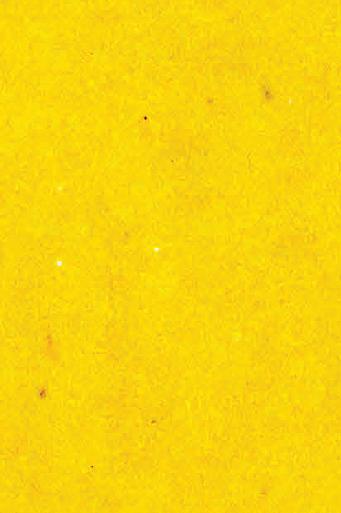








































Close Bond: A pair of athletes from Loveland, Ohio, to Muncie, Indiana 08


@bsudailynews 11.17.2022 @bsudailynews ballstatedailynews.com Mapping Out A look through Native American history reveals the origin of Muncie’s name and confronts misconceptions
BALL STATE PLANS TO REVITALIZE THE VILLAGE04
DN DAILY NEWS
SANTIAGO, DN ILLUSTRATION 12
JOSIE
BallStateDailyNews.com


Fatal shooting at University of Virginia Trump announces 2024 Presidential run

Nov. 13: Three University of Virginia football players were killed in an on-campus shooting Nov. 13. Devin Chandler, Lavel Davis Jr. and D’Sean Perry, all three juniors, were killed by a fellow student while returning on a charter bus from seeing a play in Washington, D.C. The suspect, who was captured Nov. 14, is a former member of the football team.
Nov. 15: Former President Donald Trump announced his presidential run for 2024 at his Mara-Lago Club. This announcement comes after a disappointing midterm showing for Republicans. Trump running for a third time concerns some people due to his term ending with the Capitol storming Jan. 6, 2021 and him being impeached twice, according to AP.

Drew Plitt drafted to XFL Missile hits Poland; NATO meets

Nov. 15: Former Ball State quarterback Drew Plitt was selected to XFL’s Arlington Renegades in the league’s draft Nov. 15. Plitt completed all six passes, including a touchdown, for the Cincinnati Bengals in a preseason game before being waived in August. Former Bengals assistant coaches Jonathan and Jay Hayes are coordinators for the Renegades.
VOL. 102 ISSUE: 14
Nov. 15: According to AP, a missile that hit Poland Tuesday was initially believed to have been fired from Russia and sparked an emergency meeting between NATO and the Group of Seven. This claim has been proven false, as it is now believed the missile was fired from Ukraine in response to a Russian attack Tuesday, accidentally hitting Polish land.
4-DAY WEATHER FORECAST
THURSDAY


OCCASIONAL FLURRIES
Hi: 35º Lo: 27º
FRIDAY MOSTLY
PARTLY SUNNY
Hi: 26º Lo: 14º
SATURDAY

SUNNY Hi: 29º Lo: 16º
SUNNY Hi: 29º Lo: 16º
THIS WEEK: The start of next week will be dry with temperatures in the middle 40s. Thursday into the weekend, chances of rain will increase.
START CHECKING, FROM DAY ONE.
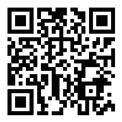
144-360), the Ball State student newspaper, publishes Thursdays during the academic year, except during semester and summer breaks. The Daily News is supported in part by an allocation from the General Fund of the university and is available free to students at various campus locations.
The Daily News offices are in AJ 278, Ball State University, Muncie, IN 47306-0481. Periodicals postage paid in Muncie, Indiana.
TO ADVERTISE
Call 765-285-8256 or email dailynewsads@bsu.edu between 8 a.m. to 5 p.m. Monday - Friday or visit ballstatedaily.com/advertise.
TO SUBSCRIBE
Call 765-285-8134 between 9 a.m. to 3 p.m. Monday - Friday. Subscription rates: $45 for one year. POSTMASTER: Send address changes to The Daily News, AJ246, Ball State University, Muncie, Indiana, 47306.
TO DONATE Visit BallStateDailyNews.com.
JOIN THE DAILY NEWS Stop by room 278 in the Art and Journalism Building. All undergraduate majors are accepted and no prior experience is necessary.
CORRECTION
The Ball State Daily News is committed to providing accurate news to the community. In the event we need to correct inaccurate information, you will find that printed here.
To submit a correction, email editor@bsudailynews.com.
Waking Up with Cardinal Weather is Ball State University’s first and only morning mobile show focused on getting your ready for the day through local news, weather and lifestyle trends. Waking Up with Cardinal Weather airs every Friday morning at 8 a.m. at @cardinalwx live on Facebook.
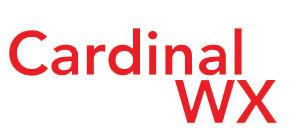
DNNews 11.17.22 02
Did you miss it? Catch up on the news from Nov. 13-16...
SUNDAY
Hunter Luzadder, Weather forecaster, Benny Weather Group
AP PHOTO, PHOTO COURTESY
JACY BRADLEY, DN PHOTO
THE DN Newsroom:
EDITORIAL BOARD Elissa Maudlin, Editor-in-chief Evan Chandler, Print Managing Editor Angelica Gonzalez Morales, Digital Managing Editor Kyle Smedley, News Editor Daniel Kehn, Sports Editor Grayson Joslin, Opinion Editor Amber Pietz, Photo Editor Jacob Boissy, Video Editor Olivia Ground, Social Media Editor Lila Fierek, Copy Director Alex Bracken, Visual Editor Amber Pietz, Visual Editor Josie Santiago, Visual Editor Lisa Renze-Rhodes, Adviser
CONTACT
765-285-8245 Editor: 765-285-8249, editor@bsudailynews.com
the
Follow
DN socials
Local Muncie 4-year-old found dead
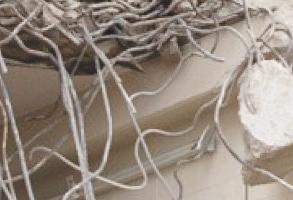





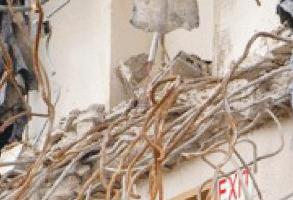
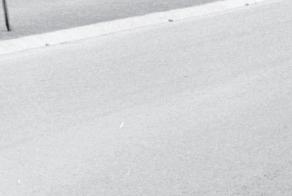


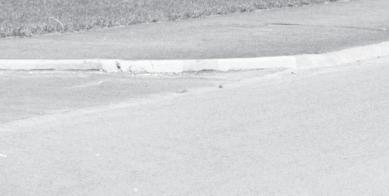
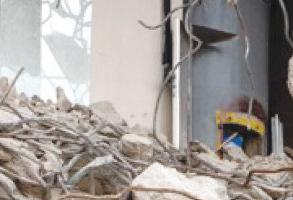



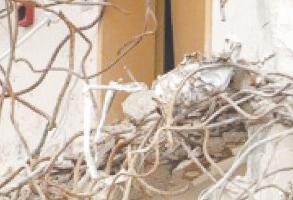
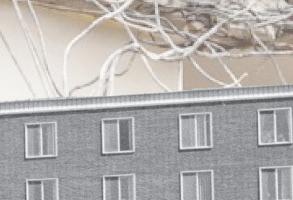

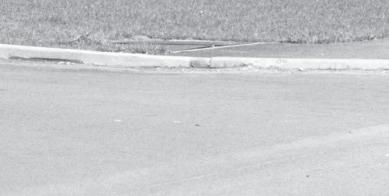








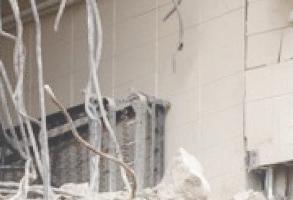


The Muncie Police Department (MPD) reported the child shot himself with a handgun left on a dollhouse Nov. 14. The child was taken to IU Health Ball Memorial Hospital by ambulance, where he was then pronounced dead. Alycia Justyne Smith, the boy’s mother, and her boyfriend, Joseph Paul Marquiz Jackson, were arrested on preliminary counts of neglect of a dependent resulting in death, a Level 1 felony carrying up to 40 years in prison.
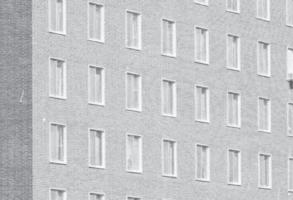


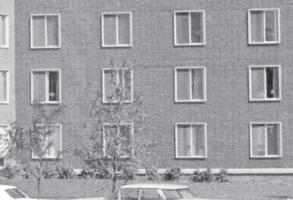





National Four University of Idaho students killed


Four students in an off-campus rental home were found dead around noon Nov. 13. Officials said the students were most likely killed hours earlier by a knife, or an “edged weapon.” The Moscow Police Department hasn’t named any suspects. Investigators are working on a timeline of the victims, and the autopsies are expected to be completed this week.
Campus Provost
Rivera-Mills withdraws from FGCU
Ball State University Provost and Vice President Susana Rivera-Mills, after being one of three finalists for Florida Gulf Coast University (FGCU) president, withdrew Nov. 8. Rivera-Mills had done campus visits and gone before FGCU’s Board of Trustees. Rivera-Mills’ decision to withdraw is unknown. The board plans to meet Nov. 17 at 8:30 a.m. to decide btween the last two finalists.
ON BALLSTATEDAILYNEWS.COM: SGA PROPOSES TO REMOVE SIGNATURES FROM APPLICATIONS
DNNews 11.17.22 03
Where LaFollette once stood, a new green space will be built 06 ALEX BRACKEN, DN PHOTO ILLUSTRATION; JACOB MUSSELMAN, DN FILE LaFollete Hall from McKinley Avenue, Aug. 2, 1968. BALL STATE UNIVERSITY LIBRARIES, PHOTO COURTESY
of Scenery A Change
Ashton Connelly Reporter
Guided by the goals set in “Destination 2040: Our Flight Path,” the Ball State University Board of Trustees and President Geoffrey S. Mearns are said to, from a March 2022 press release, finalize plans to revitalize the Village by the end of 2022 and seemingly usher in a new generation of change to West University Avenue.
To bring in more crowds and to retain those who already work in Muncie, Ball State is planning to utilize five separate lots to build a new performance hall, hotel, restaurants, shops, office space and apartments in the Village, according to a press release in March 2022. This is an effort to bring numbers to the declining Village scene and to bolster the relationship between the university and outside communities.
“We know that when we speak to prospective students or survey prospective students, there are many reasons why they would consider coming to Ball State,” Mearns said. “One of the headwinds that we face is the perception that Muncie is not a great place if you’re not on campus. So, we have a self-interest in making it an attractive commercial district to help us attract students, faculty [and] staff; we know the same as for the [IU Health Ball Memorial] Hospital as well.”
Mearns expressed confidence in the resources and assets on campus, such as Sursa Hall, Emens Auditorium, the David Owsley Museum of Art and the under-construction Brown Family Outdoor Amphitheater, to cultivate potential crowds to the community.
The third goal of “Destination 2040: Our Flight Path” — Community Engagement and Impact — is the driving motive behind the recent developments. The strategic plan was aided in its creation by Mearns soon after he became president.
“[Ball State’s involvement in the community] was a huge part of [Mearns’] vision and was a big part of the trustees’ vision because understanding if you don’t work together that way, neither one of you is as strong as you can be,” Renae Conley, chair of the Ball State Board of Trustees, said. “If you look at any community, there’s basic things that the community needs to have to survive and thrive, and it’s good housing, good schools, jobs, and if you don’t have those, people are not attracted to come and stay.”
The recent plans to utilize Ball State’s resources to help the Village community are not the first time the university has planned to expand into the area. Initially planned for completion in June 2014, McKinley Commons was to be built on the same intersection of McKinley and University Avenue as the current plans for the upcoming performance hall, but failed negotiations to secure the land led to its cancellation.
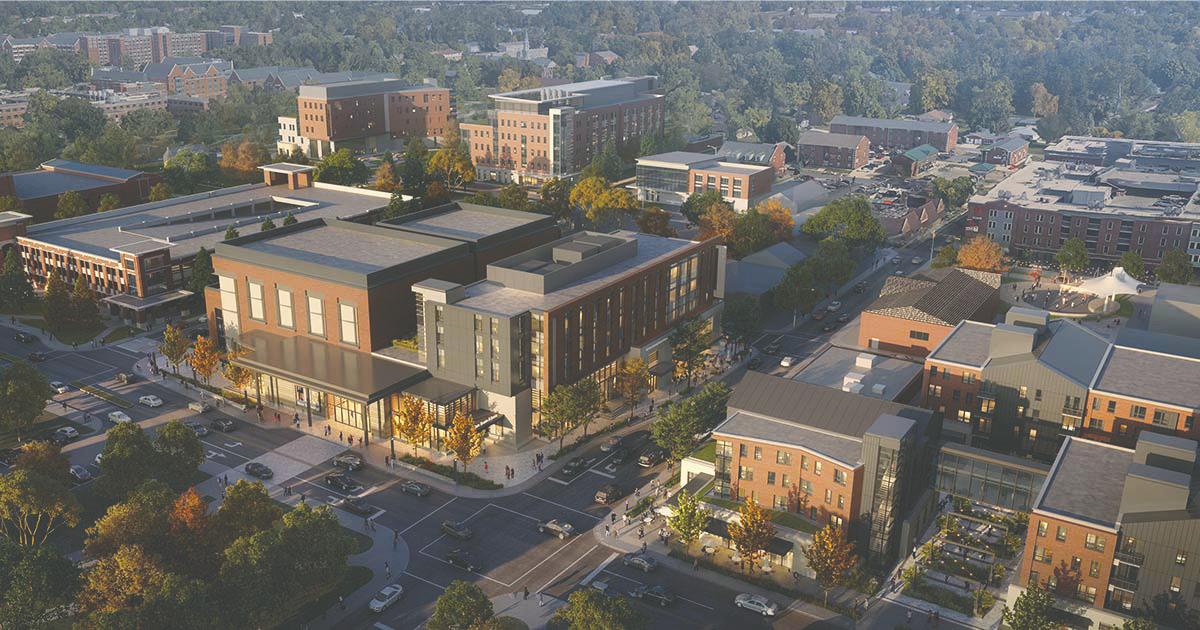


However, many of the services McKinley Commons was set to provide — some student housing with over 100 guest rooms to dually function as a hotel for guests and a hospitality lab for students — have some similarities with the current plans, albeit on a much grander scale and missing the student housing/curriculum application.
“The property that we’ve acquired [in the Village] has taken years, probably at least 10, maybe more years to acquire,” Mearns said. “So, this has been a work in progress.”
Under each goal in “Destination 2040: Our Flight Path,” there are a handful of points that provide further explanations of steps the university hopes to achieve as a key part to the overarching goal. In the third goal, the Village was mentioned by name.




Having a vibrant area around the university is really important in terms of students having cool things to do. It’s really a positive outcome for everyone if we’re able to see this vision come to fruition.”
- RENAE CONLEY, Chair of the Ball State University Board of Trustees
The Village Promenade, built in 2010, has been on the controversial side of recent Village developments, evident by its seemingly clashing architecture.
According to the render attached to the March 2022 press release, West University Avenue is set to have a much more dramatic physical change, similar to the Promenade, than seen previously.
Krysta Nickols, general manager of Brothers Muncie location, felt positive about the future business opportunities the new developments could bring to her business.
“I’m excited for what’s about to happen because when I first came to Ball State, a lot has changed,” Nickols said.
“The Village can be an anchor and really change the face of Muncie and the Ball State area,” Conley said. “Having a vibrant area around the university is really important in terms of students having cool things to do. It’s really a positive outcome for everyone if we’re able to see this vision come to fruition.”
Historically, the Village has been no stranger to economic ups and downs. Since its introduction, countless businesses have come and gone through the area.
With Brothers’ key demographic being college students, Nickols brainstormed ideas to incorporate future performance hall programs, as some of her staff are current students who are majoring in theatre.
“[Students] try to have a job to make good money but also [are] somewhat near their career path,” Nickols said. “If you’re a theatre person, like wouldn’t it be smart to work at the theatre [and] get paid for all that stuff? And even, I know they have internships and stuff, so that’d be great.”
Nickols felt adding a new range of jobs, like the hotel or new restaurants, for students right
off campus would be beneficial to Cardinals’ schedules. She felt Ball State was making the right steps toward growing the current and future student engagement with the community to prevent further decreasing numbers.
“So, whether you’re just a college student [or] someone that’s going to see the show, we want people to come in here, so I think it would be a good impact on us,” Nickols said.
Contact Ashton Connelly with comments via email at ajconnelly@bsu.edu or on Twitter @AshtonJConnelly.
DNNews 11.17.22 04
Under the third goal of ‘Destination 2040: Our Flight Path,’ President Mearns and
will soon
plans to revitalize the Village A NEW VILLAGE 1 3 4 5 2 Site 1 Site 2 Site 3 Site 4 Site 5 Performing arts center, hotel and restaurant Retail, restaurants, apartments and parking Innovation space and East Mall connection Central hub, activity and event plaza For-sale housing, apartments and for-sale townhomes/condos
Ball
GOOGLE IMAGES, PHOTO COURTESY; ALEX HINDENLANG, DN DESIGN; ALEX BRACKEN, DN DESIGN
the Board of Trustees
finalize
Source:
State University Board of Trustees
STATE UNIVERSITY, PHOTO COURTESY
BALL
I’m excited for what’s about to happen because when I first came to Ball State, a lot has changed.”
- KRYSTA NICKOLS, General manager of Brother’s Muncie
A Plate of
Community
Through their weekly Thursday night meals, Avondale United Methodist Church helps the at-risk Muncie community
Kyle Smedley News Editor
Muncie’s radio station 104.1 WLBC plays over a speaker.
A child dribbles a basketball on the sidewalk leading up to the steps of Avondale United Methodist Church on the corner of South Sampson Avenue and West Tenth Street. Bounce, bounce, bounce.
People drive down West Tenth Street and walk on the corresponding sidewalk to wave and say hello. Someone even has a Target shopping cart filled to the top with supplies.
Each side of a picnic table is surrounded with people, and the table itself is loaded with food.
People come and go, piling up plates with the provided meal and stuffing shopping bags with canned and non-perishable food items.
This is the scene Nov. 10 at Avondale. 5-6 p.m. every Thursday of every week, volunteers from the church hold a Thursday night meal to serve the Muncie community.

“This is one of the things that really means so much because this church is on this corner, everybody knows where it is and they keep coming back,” Jeff
just means everything. I mean, it’s amazing.”
With a cane in hand and his knee brace on, Watters has been attending Avondale for over 50 years. While he has been involved with the church for over half a century, about 10-20 people currently attend Avondale Methodist Church consistently every week. However, Watters said sometimes there are 100-150 people, not including volunteers, who come to the Thursday meals.
Brian Carless began volunteering for the Thursday night meals in 2018. After graduating from Ball State University in 2016, Carless moved back to his home area of Lafayette, Indiana, only to move back to Muncie in 2018, mainly because of Avondale and their mission to serve.
“We’re here in the neighborhood, [and] we want to be here for the neighbors, as opposed to just doing a Sunday worship service and sending people on their way,” Carless said. “[We want to be] more destinational and a place of peace and hope for neighbors in the neighborhood.”
The Thursday night meal idea began with The Revolution, a church on Ball State’s campus, before they partnered with Avondale to make it a weekly event. At first, the meals were supported by Avondale, before the event began drawing so many people that they couldn’t support it alone.
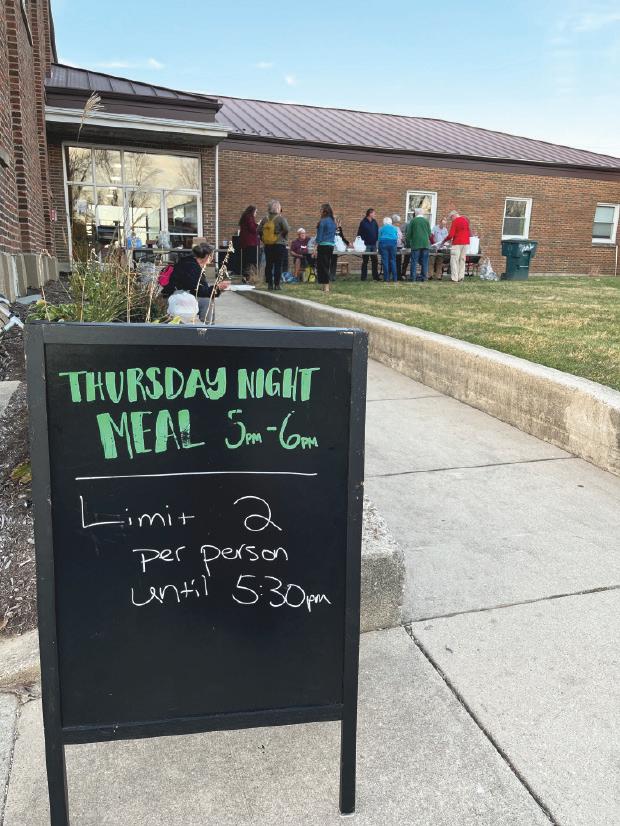
Carless said the 8twelve Coalition writes grants to fund the meals with additional funding and help from the nearby First Presbyterian Church and Tabor Baptist Church.
At this point, Carless said many people expect this event to be where they get their meals on Thursdays and for their friends and neighbors too. Carless said the event has become a necessity due to the Southwest side of Muncie being classified as a food desert, or “an urban area in which it is difficult to buy affordable or good-quality, fresh food,” according to the Oxford English Dictionary.
When COVID-19 affected the community in 2020, the church knew they couldn’t stop providing Thursday meals because many people depended on them. So, the church began to buy food in bulk, put that food in grocery sacks and send people with it, rather than the traditional Thursday meals that came beforehand where most got a plate of food and ate at the church.
Carless has noticed for most people who come to the Thursday meals, their money comes at the beginning of each month, whether that be in disability checks or just general income. With that in mind, he said the first couple of weeks of each month aren’t normally as busy as the last couple when necessity begins to grow.
“[We see] a lot of familiar faces. Sometimes, there’s months between seeing faces, and that
could be for so many different reasons, but one thing people can always expect when they come here is [there are] no questions asked,” Carless said. “There’s no expectations, you can come here even if you haven’t been here for years. We’re not gonna ask you why, we’re not going to ask you any invasive questions; just feel free, feel safe.”
Carless told a story about a woman named Trula who came to the Thursday night meal almost every week. She rode a bike around the community and greeted people.
Oct. 16, Trula was hit by a train and died 11 days later. Nov. 17, Avondale is hosting a Celebration of Life in her honor where food will be provided by those involved with Thursday night meals, as well as the local restaurant Twin Archer, one of Trula’s former doctors and more.
“We’ve had five-plus memorial services since we’ve been doing this meal for people who have come to the meal often, faces that we knew who have passed, [overdosed and] died,” Carless said. “... What’s nice is we can all share that struggle together
like we celebrate fun times. We have block parties, we get petting zoos, we have dunk contests, we have hot dog cook-offs, all kinds of things, but then we also can really share the hard times together.”
Carless said Thursday night meals started as a way to provide food to the community and to build community and relationships but quickly developed into a way to make connections to provide services such as vaccinations, COVID-19 testing, heart monitoring, HIV testing and more.
“Thursday is something that everyone can come to because it’s here in the neighborhood, and it’s not far, and so, if we can bring amenities and access to amenities here, that bridges a huge gap, and so now, we’re looking at more of the whole health of a person,” Carless said. “It’s not just spiritual health, it’s mental health, it’s physical health, being able to eat, feeling safe, engaging in relationships and connections.”
Carless said while sometimes the lack of volunteers compared to the responsibility Avondale takes on can become stressful and cause burnout, he’s always encouraged when he hears stories of those who come to the Thursday night meals making connections with organizations and people. These connections can end up providing members of the at-risk community with healthcare and other essentials.
Among the numerous organizations helping Avondale with the weekly event is Open Door Health Services. Joseph Castillo and Alicia Wilson, neighborhood ambassadors with Open Door, help those in the Muncie community get connected to resources they may not know are available such as doctors appointments, housing and help paying for things like utility and rent bills and food stamps.
“The main thing is to not only make sure they have a meal for that week or for that day but also to have them congregate and talk amongst each other
News
Jeff Watters (sitting closest) sits with others, grilling meat at Avondale United Methodist Church’s Thursday night meal June 24, 2021. Watters has gone to Avondale for over 50 years and volunteers at this weekly event.
BRIAN CARLESS, PHOTO PROVIDED
A sign for a Thursday night meal is set up outside of Avondale United Methodist Church in Muncie, Ind., Nov. 10. The corner of South Sampson Avenue and West Tenth Street plays host to this weekly event that provides food for the Muncie community.
KYLE SMEDLEY, DN
[For] a lot of people, this group of people is their family. They go into hard times, one of us picks them up, one of us takes them to the hospital, one of us spots some cash when they need it.”
4See COMMUNITY, 18
- JEN CLEVELAND, Online teacher at the Indiana Digital Learning School of Union School Corporation
Ball State’s largest dorm gets replaced with a green space for students
That’s how James Lowe, associate vice president for facilities planning and management at Ball State University, described the LaFollette Complex that once stood in full.
One of the oldest residence halls on Ball State’s campus. Gone.
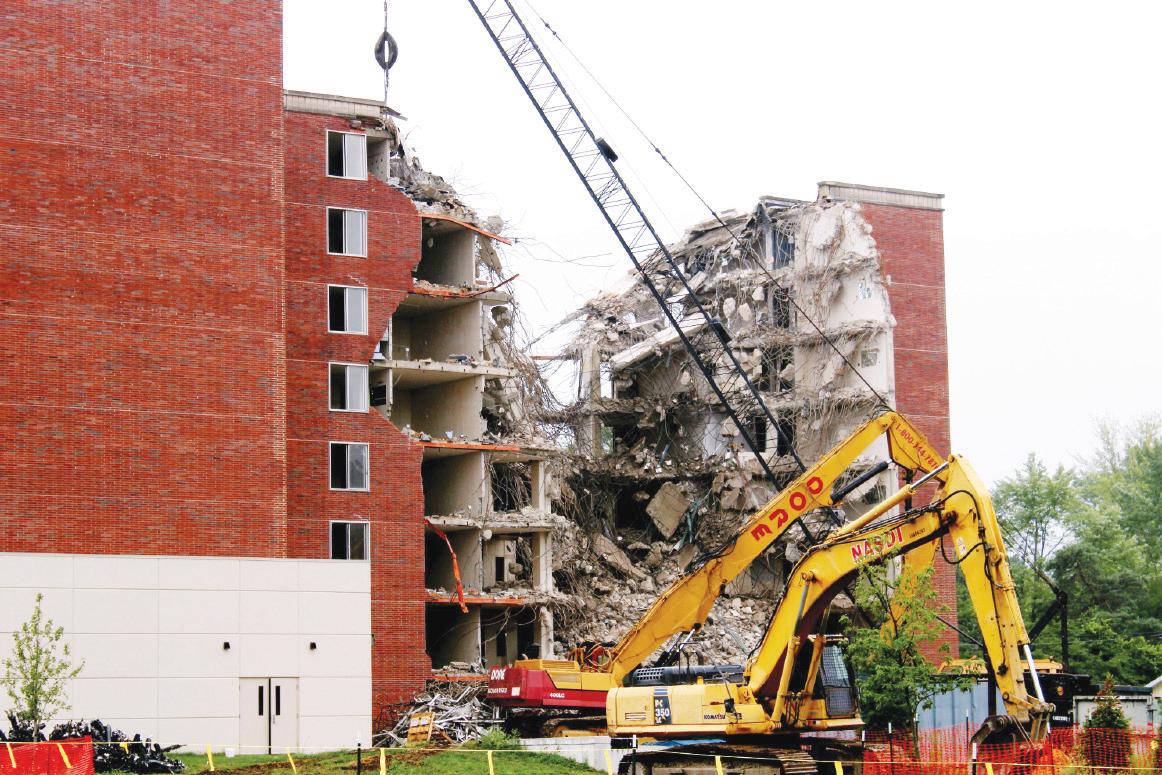
The ability to fit 1,900 beds in one complex. Gone.
A seating area commemorating the structure that once stood, a green space for students and additional seating for North Dining. Coming soon.
“We decided that LaFollette Hall, as we look forward, was one of those facilities that [was] not economically feasible to keep,” Lowe said. “There were too many other inherent reasons why it would be very expensive. Plus, you may not be aware, but if you look around campus at all our other residence halls, [there] are about 550-600 beds and capacity.”
Lowe’s department covers a wide variety of problems on campus including construction, renovation and maintenance of all academic and administrative buildings. The department provides infrastructure and support architecturally, mechanically and electrically.
The plan to tear down LaFollette began in 2015 and has been in motion since. It started with the building of two new residence halls in the North Neighborhood and the remodeling of Johnson A and B. Along with those renovations, North Dining was also built and part of the plan is in motion.
“Once those projects were complete, we could totally take LaFollette down, but we did so in parts,” Lowe said. “As we built out and renovated certain parts of the North residential halls, we did phase demolition of LaFollette. In 2017, we took two halls down, and in 2020, we took the biggest portion of LaFollette off and tore that down, including the middle section.”
While they are building a new green space for students, they are also redoing the bike/pedestrian path along the hall.
“We are going to plant trees [and] install a seating
Lowe described some of the precautions that have to be taken.
“With any project that any contractor undertakes at Ball State University, we surround it with [a] protective fence to keep people from walking through that area,” Lowe said. “The other thing we have to do is be aware of, … we are still in session. There are trucks that are hauling away debris, there is heavy construction traffic that’s coming in, [there are] students walking, students biking, people driving and so forth.”

LaFollette, the largest residence hall complex at Ball State, housed about 1,900 students. Having no air conditioning and elevators that only go to the first and sixth floor were just two of the complaints students have compared to the new Johnson A complex.
Ramey said they hope to have LaFollette torn down before the end of 2022, and the demolition will most likely last through the end of December.
Some past students have great memories about LaFollette Complex, one being alumnus David Studinski who lived in LaFollette from 2003-04 during his freshman year.
“The ability to have our doors cracked open the entire time, to be able to wander the hallway and just poke into people’s rooms and say, ‘Hi,’ and to have a very much convenient and community experience,” Studinski said, “... that really made it feel like you had moved into a really special place.”
The ability to have our doors cracked open the entire time, to be able to wander the hallway and just poke into people’s rooms and say, ‘Hi,’ and to have a very much convenient and community experience ... that really made it feel like you had moved into a really special place.”
- DAVID STUDINSKI, Ball State alumnus
Due to this, Lowe and others work with construction firms to have pathways on the project site, so they don’t drive throughout campus, he said.
Robert Ramey, director of construction at Ball State, also talked about the challenge of demolishing and building on where LaFollette once stood.
“One of the first things is you go through your schematic and delegated design,” Ramey said. “You look at your phasing [and] staging of a project and just overall use of our university and ask, ‘Alright, so how are we going to utilize this space once you know a structure is removed? What best suits the campus, suits the area, landscaping and etc.?’”
Alumnus Gerry Appel, who stayed in LaFollette for two academic years, 97’-98’ and 98’-99’, also had his reasons why LaFollette was special to him.
“Because the complex was so large, it was such a great opportunity to meet all sorts of people and make a lot of friends,” Appel said. “It was great how there were several food [and] several dining options inside the building. So, on those awful winter days, if you don’t have class, you can stay inside, but, you know, I think [we] really kind of made it the most special. This is no offense to anybody, but LaFollette wasn’t exactly the nicest residence hall that we’ve seen in this country, and that just forced you to make friends and get along with others.”
Appel also credits the residence hall assistants and a strong Residence Hall Association presence in Brayton/Clevenger while he was in school.
One section —Brayton/Clevenger — still stands as the ‘hub’ of LaFollette’s infrastructure. Lowe mentioned the extensive amount of work it would take to cut off the services, which is why it is the last remaining hall of the complex.
Studinski talked about seeing the structure almost completely gone 2022 homecoming week and how it brought back memories and a period of reflection on everything he experienced while living there.
He said even though it had been a long time since he lived there, just seeing it had the ability to bring back memories.
Appel compared himself to “sounding like an old man,” when talking about the tearing down of the complex. He talked about how although living in a top-notch facility is nice, living somewhere that maybe is not the nicest forces you to appreciate things and make more friends.
Replacing LaFollette, the seating in the new green area will be made out of reused limestone from LaFollette that will memorialize each hall, something Studinski said shows the lasting importance of the complex.
“For them to know that they needed to do something meaningful in what otherwise was not a spectacular building by modern standards, but the fact that time and time again people talk about the experience of what those buildings are,” Studinski said, “the fact that they saw that much power in that experience that they needed to commemorate it on campus, I think that really says a lot for what that building meant to campus.”
Contact Elijah Poe with comments at elijah. poe@bsu.edu or on Twitter @ElijahPoe4.
DNNews 11.17.22 06
Construction workers continue the demolition plan for LaFollette Complex Aug. 10. Phase Three of the demolition started May. AMBER PIETZ, DN
New Coach, New Goal




With new head coach Michael Lewis, Ball State Men’s Basketball is looking ahead at the 2022-23 season 09


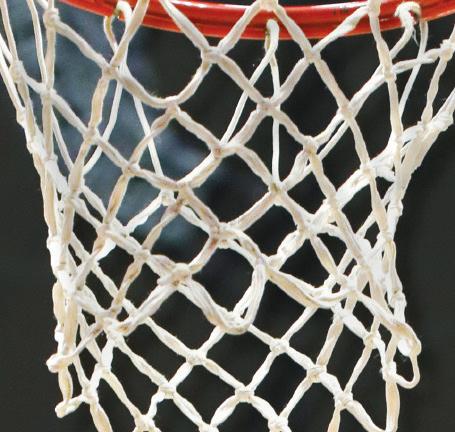

Sophomore





Ball State beat DePauw 87-60. AMBER PIETZ, DN




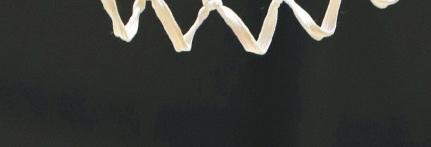



Football Assistant head coach named Broyles Award nominee

Ball State Football assistant head coach, defensive coordinator and inside linebackers coach Tyler Stockton was listed as a nominee for the Broyles award, which honors the nation’s best assistant coach. This is Stockton’s third consecutive year being nominated for the award named after hall of fame Arkansas head coach Frank Broyles. There are 58 total nominees.

Volleyball Women’s team wins MAC Regular season

With a victory over Toledo last night, Ball State has claimed its 10th MidAmerican Conference (MAC) regular season championship. The Cardinals are now set to host the 2022 MAC Tournament which they won in 2021. Junior outside hitter Cait Snyder led the championship-winning sweep over the Rockets with 12 kills while sophomore setter Megan Wielonski had a team-high 36 assists.
Swim and Dive
Women’s team takes 11 events in IUPUI win
Ball State took a 189.5-109.5 victory over Indiana University-Purdue University – Indianapolis (IUPUI) Nov. 11 with four different swimmers claiming two individual wins each. The Cardinals swept the relays and earned their first diving victory of the season. Now 2-2 overall, Ball State will wait until Dec. 1 to conclude the first portion of the 2022-23 season at the Miami Invitational.
ON BALLSTATEDAILYNEWS.COM: SCOTT: THE NFL’S NEW PRO BOWL FORMAT WILL NOT BE POPULAR
11.17.22 07
DNSports
center Payton Sparks (left) and redshirt sophomore forward Mickey Pearson Jr. (right) go for a rebound during an exhibition match against DePauw Oct. 29 at Worthen Arena.
FROM LOVELAND TO MUNCIE
Two Ball State Women’s Volleyball players with similar journeys are now in their fourth year with the program
Corbin Hubert
Reporter
Two pounds of ground beef. One can of tomato paste. Four cups of water. One large onion. Three tablespoons of chili powder. One teaspoon of cinnamon. A half an ounce of unsweetened chocolate. Cincinnati-style chili.
“We can’t get enough of it,” fourth-year libero for Ball State Women’s Volleyball Maggie Huber said.
Huber and fourth-year middle blocker Marie Plitt are both from Loveland, Ohio, about two and a half hours away from their beloved Cincinnati chili. Huber and Marie are a pair playing for Ball State Women’s Volleyball.
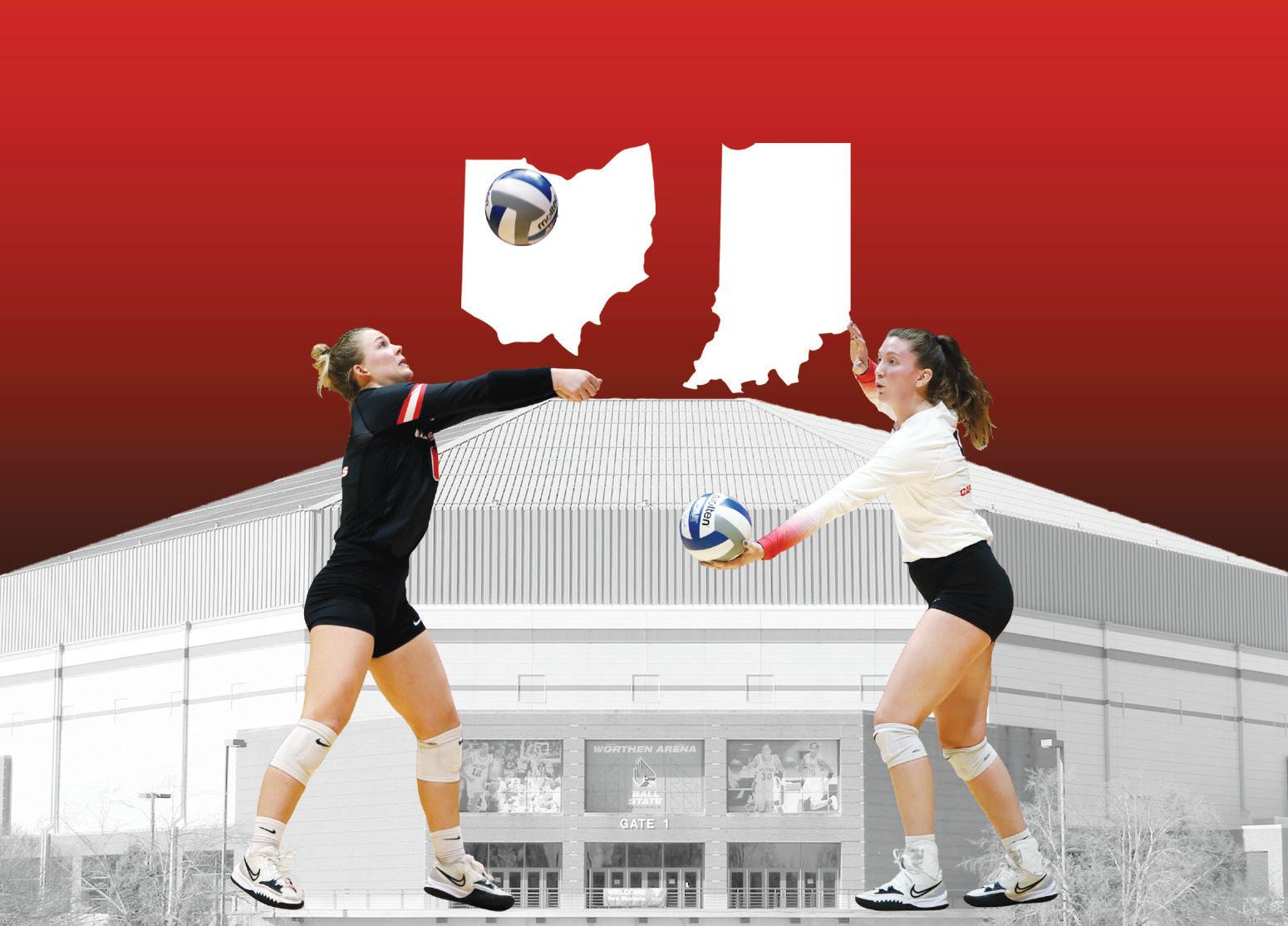
“Outside of the chili, which is technically in Cincinnati, I love going on the Loveland Bike Trail with my family because we would walk and take the dogs, and there are some nice restaurants around there,” Huber said.
Marie, on the other hand, appreciates downtown Loveland for the shopping areas and the coffee shops. Being from the same town, with a population of 13,191 people, Huber and Marie did not attend the same high school. However, they did play for the same travel volleyball team, Elevation, based out of Mason, Ohio.
player, winning individual awards and state championships for head coach Jeni Case at Ursuline Academy, an all-girls preparatory academy in Cincinnati. She spent four years at Ursuline, three of which Huber was a letterwinner, two-time all conference selection and second team all-state selection in her junior year.
We play volleyball every day together, and we’re also roommates, so like, we make dinner together every night and we hang out a lot, but the bond we have on the court is like I can look to her and trust what she’s saying, or if she gets on me for something, I can say you are right … there’s never any malintentions.”
- MARIE PLITT, Fourth-year middle blocker
“It was fun to travel to other places,” Marie said. “We do that a little bit now, traveling to different places, but then I was still in high school, and since I was not teammates with her in high school, it was fun to be able to see [Huber] for certain times in the year.”
Outside of Elevation, Huber was a decorated
“Jeni was such a huge influence on me,” Huber said. “She had been my coach for so many years, and her daughter, Logan Case, is one of my best friends from high school, so I spent a lot of time around [Jeni].”
Along with her individual accomplishments, Huber was part of back-to-back Ohio High School
Athletic Association (OHSAA) Division I state championship winning teams at Ursuline.
She believes the big crowds her school brought to games helped her understand how to play in high-pressure situations.
While Huber was at Ursuline, Marie was a multisport athlete at Loveland High School in volleyball and basketball, earning four letters for her play on the basketball court.
Under her head coach and mother Julie Plitt, she won back-to-back Eastern Cincinnati Conference (ECC) Player of the Year awards in her final two years at Loveland High School and was a first team all-ECC selection in each of her four years.
Marie’s father, Steve Plitt, lamented on how his wife and daughter faced some scrutiny for their relationship on the court, but their work ethic did the talking.
“Marie’s play spoke for itself, and my wife’s experience and success at other high schools were great for the Loveland High School program who captured league titles and sectional titles and a district title, which had never happened before, so both of them thrived in that environment,” Steve said.
Steve noticed a unique type of bond unfold between his wife and daughter.
“I give a lot of credit to Marie and her mom and their relationship to go in between the court and home, so watching them grow as a coach and a player was special, but it never carried over to home because their bond became even closer off of the court,” he said.
With the success, Marie said her mom was harder on her than any of her teammates when it came to volleyball because of their relationship at home.
When the time came for Marie to make a decision for college, Ball State was at the top of the list.
“I think her brother being there and her being familiar with the campus and seeing the tradition of the volleyball program, along with her visit there and the coaches asking more in-depth questions about what her goals were beyond volleyball in life, [all played a role in her decision],” Steve said.
After Marie had committed, the path was paved for Huber to make her decision.
“Maggie started talking to Ball State, and she was like, ‘I think I want to commit here, but is it okay with you?’ and I said, ‘Please I would love that, it would be so much fun,’” Marie said.
At the time, the relationship between Huber and Marie was not as strong as one would think.
“We were definitely not as close as we are now, so I remember not wanting to overstep and commit to the same place that [Marie] was going,” Huber said.
Fast forward four years and two Mid-American Conference (MAC) championships later, the two are closer than ever.
Huber and Marie, now roommates, spend most of their time together. Both playing volleyball, making dinner and enjoying each other’s company on and off the court.
“I can look at her and trust what she’s saying, or if she gets on me for something, I can say, ‘You are right,’ … there’s never any malintentions,” Marie said.
A bond that carries through.
“Now we’re the best of friends,” Huber said.
Contact Corbin Hubert with comments at cchubert@bsu.edu or on Twitter @corbin_ hubert_.
DNSports 11.17.22 08
AMBER PIETZ, DN PHOTO ILLUSTRATION; VECTEEZY
Derran Cobb Sports Reporter
The leaves are falling, the temperature is dropping and Worthen Arena is rocking. That means one thing.


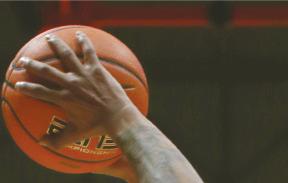
Men’s basketball is back.
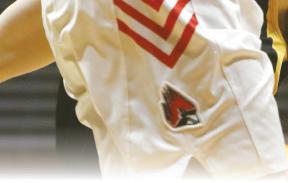
With the hire of head coach Michael Lewis who, in spite of his extensive assistant coaching career, is in his first year as head coach, and the return of two former Mid-American Conference (MAC) Freshman of the Year winners, all eyes are on the Cardinals this season.

Redshirt junior guard Jarron ‘Boogie’ Coleman transferred to the University of Missouri after the 2020-21 season where he started 21 games for the Tigers. Now, he’s back with experience to bring to his teammates.
“At Mizzou, I learned that the talent ain’t really too much of a difference, so I really just wanted to bring back that we should have no fear no matter who we play,” Coleman said. “We are just as talented as any team out here, so I just want us to have no quit and no fear in us.”
Coleman was named 2020 MAC Freshman of the Year after a stellar freshman campaign where he led the MAC in freshmen scoring in the postseason. The next season, he continued to lead the Cardinals offense, scoring his career-high of 33 points against Toledo in March 2021.
Upon his return, Coleman admitted the fans and new teammates made him glad he came back.
“Honestly, [it’s] better than I expected, you know, just coming back, seeing new faces with the team and all that,” Coleman said. “It’s fun seeing the fans and fans that I knew from before, it kind of brought the home feeling to it.”

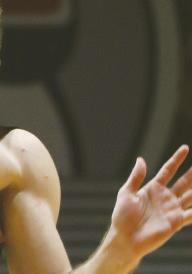

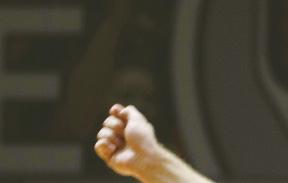
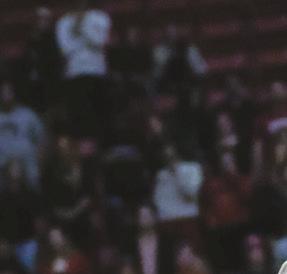



Reigning MAC Freshman of the Year and sophomore center Payton Sparks is back after entering the transfer portal this past offseason. He was named to the preseason All-MAC First Team.

For Sparks, the Ball State fans are really important to the team and its success.
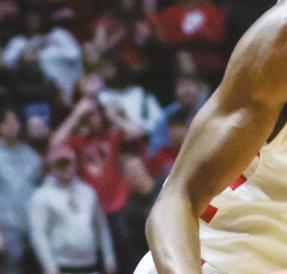



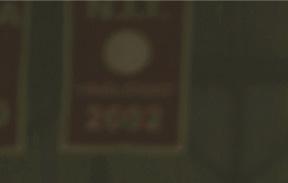
“Fans are great. I mean, it gives us a lot of energy,” he said. “They give me a lot of energy going out there, getting a dunk and hearing them go crazy and giving the team a spark. It just feels amazing to be back.”
As the new Cardinals’ head coach, Lewis comes from a decorated background and has goals for the program.
“We want to help build this program back to what it was when I was coming up, when I was in high school, competing for the MAC championships,” Lewis said. “There’s no reason why this university is not doing that.”
Lewis’ players described him as “aggressive but in a good way.”
“He’s straightforward. He doesn’t sugarcoat anything,” junior guard Luke Bumbalough explained. “He’s gonna call you out on whatever it is and just be upfront with you.”


This season, Bumbalough said Lewis gave him a new role as a leader for his team and steps into it without questions.
- PAYTON SPARKS


“He’s a great coach, and he knows what he’s doing for it to be his first year, and it’s gonna get even better,” Coleman said.
With an average of 19 points through two games, Coleman leads the team in scoring and shooting efficiently from the field and the perimeter (62 percent). Sparks is continuing his good play from last season, scoring 16.5 points through two games along with an average of seven rebounds.
After months of practicing and competing against one another, the Cardinals have now been able to translate this into games. The mindsets of the players this season have been shaped by Lewis, and he is proud of his players for buying into his plans for the team.
“Expectations and accountability [have] risen around here, and I’ve gotta give these guys a lot of credit for not balking at us when we said, ‘Here we are, let’s go have a good basketball program,’” he said.
Bumbalough expressed his gratitude that the Cardinals have found a chemistry amongst themselves, and it shows in the team’s ball movement.
“We have really good team chemistry like everyone, you know, loves everyone right now.” Bumbalough said. “The beginning, obviously we were just feeling each other out, but at this point, if someone’s in the wrong, we’re gonna call them out on it.”
The Cardinals have been sharing the ball pretty well, averaging 16 assists per game. In the first game, six different players finished in double figures with almost everyone scoring.
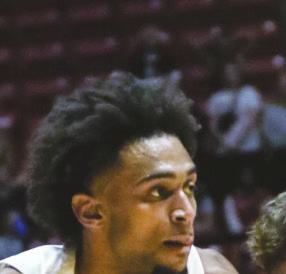
Senior guard Demarius Jacobs has been leading the team and runs the offense. This season, he is averaging 15.5 points and dishing out a team-high 4.5 assists.
Sparks explained he only wants to improve.
“[This season is about] not being complacent, just working hard. I just want to get better every day, and I want to be the best that I can be for the team,” Sparks said. “I feel like a big contributor to the team. I just want to help us to be better defensively, better offensively and just be better all around, just help my teammates as much as I can.”
“[Lewis] told me that my next step is bringing guys together,” Bumbalough said. “When things are going bad, whether it’s dead ball or timeout, just make sure the guys hear my voice on offense [and] defense.”
Coleman shares Bumbalough’s belief in Lewis’ coaching and looks forward to how he progresses through the season.
He sees how Lewis is teaching the team on how to win games, and Coleman sees the advantages of learning early compared to past coaches.
Sparks echoes Bumbalough’s belief, adding all the guys work together and add something different to the team.
“We’ve been building camaraderie as a team,” Sparks said. “We’ve brought in a lot of new guys; different guys bring different strengths to the locker room, and it’s been great.”
The first few games of the season have shown the signs of a winning culture being built for the Cardinals, with high energy from the bench, a defensive presence and sharing the ball.
Contact Derran Cobb with comments at derran. cobb@bsu.edu or on Twitter @Derran_cobb.
DNSports 11.17. 22 09
Ball State Men’s Basketball has begun a new season, and the team culture is changing
We are just as talented as any team out here, so I just want us to have no quit and no fear in us.”
- JARRON COLEMAN
Junior guard Kaiyem Cleary takes the ball up the court during the second half of a game against Earlham Nov. 7 at Worthen Arena. EVE GREEN, DN
Junior guard Jalen Windham goes for a basket in an exhibition game against DePauw Oct. 29 at Worthen Arena. Windham scored 12 points during the game. AMBER PIETZ, DN
Fans are great. I mean, it gives us a lot of energy. They give me a lot of energy going out there, getting a dunk and hearing them go crazy and giving the team a spark. It just feels amazing to be back.”
in the
Cold Cardinals
Ball State Football fell 32-18 to Ohio on senior night at Scheumann Stadium
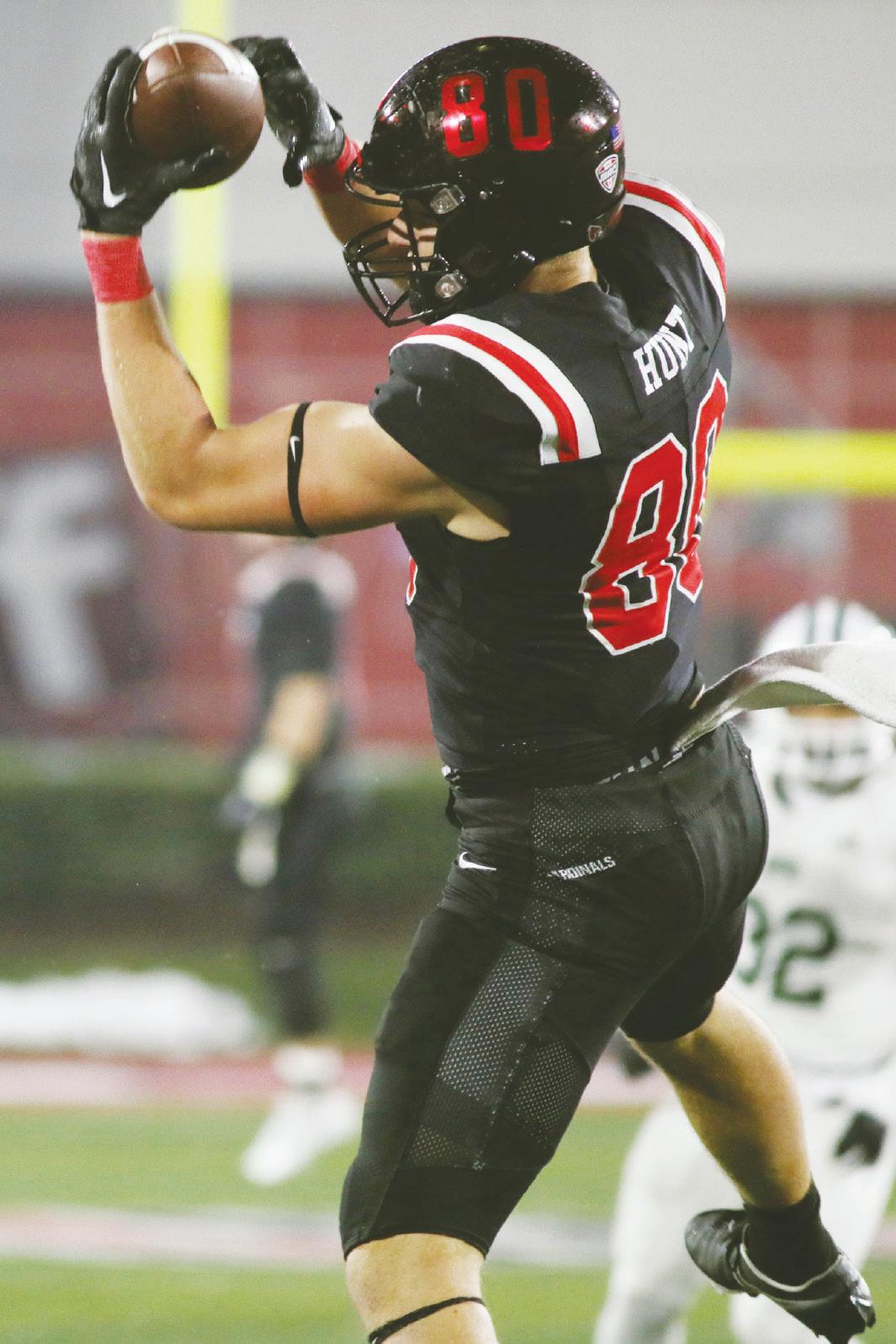

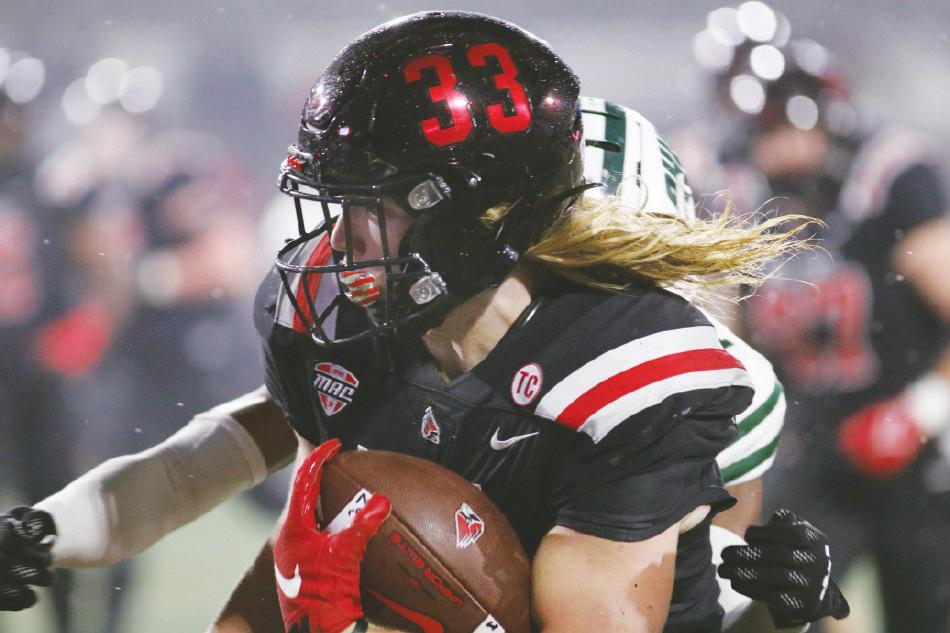

DNSports 11.17.22 10
Redshirt freshman tight end Brady Hunt catches the football in a game against Ohio Nov. 15 at Scheumann Stadium. Hunt scored one touchdown during the game. AMBER PIETZ, DN
Sophomore running back Carson Steele runs with the ball in a game against Ohio Nov. 15 at Scheumann Stadium. Steele gained 101 yards during the game.
AMBER PIETZ, DN
Sophomore safety Brayden Evans warms up before a game against Ohio at Scheumann Stadium Nov. 15. Ball State is now 5-6 for the 2022 season. JACY BRADLEY, DN
From Stage to Stage
























































































































































































































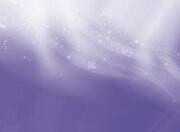


























































































































Campus Pop-up dance performances scheduled at DOMA

























































From 2-4:30 p.m. Nov. 19, three professional dancers from New York, including Amelia Koper Heintzelman (a former guest teacher in the Department of Theatre and Dance), will each perform in the sculpture court at the David Owsley Museum of Art on campus. The performances are supplementary to the museum’s exhibits; guests can still explore the museum as normal.
Community Muncie Public Library book sales begin
From 9 a.m.-2 p.m. Nov. 19 and 1-4 p.m. Nov. 20, Friends of Muncie Public Library will be hosting their biannual book sale at 1110 W. Memorial Drive to raise funds for Muncie Public Library. They will be selling CDs, DVDs and VHS tapes as well as books; only cash and checks will be accepted at the book sale.




Campus ELF the Musical opens at Emens Auditorium



On Nov. 21 at 7:30 p.m., the holiday musical based on the 2003 film will premiere at Emens Auditorium for one night only. The family-friendly production features both child-like wonder and adult humor. Tickets are free for Ball State students who reserve in advance or $10 at the door for students.


















ON BALLSTATEDAILYNEWS.COM: HARVEST FEST RETURNS TO MUNCIE DNLife 11.17.22 11
14
Ball State alumnus Jake Letts takes the stage in a whole new role in the touring cast of “Aladdin”
AMBER PIETZ, DN ILLUSTRATION; FREEPIK
Grayson Joslin Opinion Editor
Chief Munsee never existed.
Despite the legend of a powerful Native American chief roaming the area that would become Muncie being ingrained in the local culture, nothing has been found to confirm the existence of the chief.
The statue purported to be the fictitious chief located at the split between Walnut Street and Granville Avenue is actually a statue depicting the native people of the Great Plains who never lived in Indiana. The statue, Cyrus Dallin’s Appeal to the Great Spirit, was placed in Muncie as a memorial to the late Edmund F. Ball, one of the five Ball brothers who helped usher in the modern era of Ball State University.
Chris Flook came across many misconceptions about the origin of Muncie and the name of the town in his life, he said. Flook first got interested in the Native American history of Muncie and East Central Indiana when he started volunteering for the Delaware County Historical Society a decade ago.
“I discovered a lot of my understanding of the indigenous history of the area was fundamentally wrong,” Flook said.
He then got involved with projects to help further research about the indigenous history of Muncie and Delaware County, culminating in a documentary, “Lenape on the Wapahani River,” and a book, “Native Americans of East-Central Indiana.”
Flook’s research focused on the true namesake for both Muncie and Delaware County: the Lenape people who used to inhabit East Central Indiana. More than two centuries after their forced removal, the Lenape’s influence is still being seen in the Muncie community.
The Lenape in Lenapehoking
Lenapehoking is what the Lenape call their homeland, which is composed of most of New Jersey, eastern Pennsylvania and portions of Delaware and Maryland, according to Jeremy Johnson.
Johnson is a member of the Delaware Tribe of Indians, a federally recognized tribe of the Lenape in Bartlesville, Oklahoma. This specific tribe is the largest Lenape tribe in the United States, Johnson, the tribe’s cultural educational director, said.
The Lenape made the territory their own since what Johnson called “time immemorial,” meaning as long as anyone could remember.
“We’re considered the grandfather tribe,” Johnson said. “Oftentimes, [other tribes] would come to us to settle disputes amongst other nations because they recognize that we’ve been there longer than any other nation.”
The Lenape’s first contact with European colonizers came in the 16th century, when Henry Hudson landed on Manhattan Island on behalf of the Dutch Republic. Some time later, Johnson said, the Dutch struck a deal to purchase Manhattan Island and pushed the Lenape people out of that area.
“They built a wall,” Johnson said. “Hence the name Wall Street … so that was our first forced removal.”
As time passed and the forced removals became more common, some of the Lenape moved north into modern-day Canada with the Mohican people, Johnson said. However, in the 17th century, most of the Lenape were still living in the Lenapehoking.
Johnson added that the name Delaware, which would later become the adopted English name for the Lenape tribe, came from Thomas West,
the 3rd Baron De La Warr, who was an English merchant. This name would later be applied to the river that gave the Lenape their English name.
William Penn, the founder of Pennsylvania, had a very good relationship with the Lenape, Johnson said. He mentioned that Penn signed a treaty with the Lenape, promising that no side would take advantage of another.
However, after Penn’s death, his surviving sons “did not feel the same,” according to Johnson, which led to the Walking Purchase, forcing the Lenape west.
“They were refugees from their homeland,” Flook said.
In 1778, the Lenape became the first tribe to sign a treaty with the United States — a two-yearold nation — and France. This made the Lenape the first Native American people to recognize the United States as a separate entity from the United Kingdom, Johnson said. The treaty also recognized the boundaries of the Lenape’s land.
“The bad thing about that was that treaty was never ratified,” Johnson said. “Even though we have held our end of the deal.”
After the American Revolution, the Legion of the United States fought against the Lenape and their allies, leading to their displacement after the Battle of Fallen Timbers in 1794. Thus, the Lenape moved further west into the territory that would become modern day Indiana.
“[The Lenape] were attempting to stabilize their culture, their politics, everything,” Flook said. “They were more or less kicked out of Ohio.”
The Lenape in East Central Indiana
When the Lenape moved to Indiana territory, it was meant to be a land for the Native Americans, Johnson said.
“We were supposed to have two representatives in Congress,” Johnson said. “They never ratified it.”
Flook said the society and the culture of the Lenape adapted to represent their contemporary needs in the early 19th century.
“They lived like anybody else living along this area,” Flook said. “They rode horseback, and they farmed.”
The Lenape also began setting up towns once they settled down in Indiana. These towns would consist of one street; this system of town planning had existed for the Lenape since they lived in Ohio, Johnson said.
“The misconception is we were just still living in Wigwam longhouses,” he said.
Johnson noted that the Lenape who moved into Indiana resisted conversion to Christianity, which impacted some of the tribe’s relatives and closest allies.
“They were forbidden to practice any cultural or traditional beliefs,” Johnson said.
However, despite this resistance, the Lenape still participated in commerce. Johnson called the Lenape “shrewd businessmen” when it came to the economy.
“When the Dutch showed up, we started trading for cloth and ribbon,” Johnson said. “Our women immediately start[ed] making dresses and blouses based on what they saw and liked.”
With each treaty, the United States government, according to Johnson, was supposed to give the Lenape certain necessities. But Johnson said this was hardly the case.
“Oftentimes, we would get the worst of the worst,” Johnson said. “The rancid meats.”
Overall, in their time in Indiana, the Lenape had to participate in what Johnson called “survivalbased assimilation.” The land was different from what they were used to in their homelands, and some of their land-based traditions faded away.
“A lot of our designs and themes were very floral,” Johnson said. “A lot of the ceremonies ... in those ways were based on what we knew about fish runs and hunting in agriculture … a lot of things were adapted to fit the areas we’re forced to.”
Flook noted this assimilation into American culture by the Lenape.
“The differences [are] just that they were Native Americans,” Flook said. “So their culture and their religion reflected Lenape traditions.”
DNLife 11.17.22 12
Muncie and Delaware County were both named after the Lenape people who lived in Delaware County more than two centuries ago
Henry Hudson conducts in the first recorded trade between the Lenape and Europeans in September.
1609 1795 1778
The Treaty of Greenville forces the Lenape to move to modern day Indiana. The Lenape sign the Treaty of Fort Pitt, becoming the first Native American tribe to recognize the United States.
This design is representative of what the Lenape people used in their clothing when they were in Indiana. DELAWARE TRIBE OF INDIANS, PHOTO PROVIDED
We’re trying to be ambassadors for our culture and history.”
- JEREMY JOHNSON, Cultural education director, Delaware Tribe of Indians
We’re considered the grandfather tribe. Oftentimes, they [other tribes] would come to us to settle disputes amongst other nations because they recognize that we’ve been there longer than any other nation.”
- JEREMY JOHNSON, Cultural education director, Delaware Tribe of
Indians
To make up for the loss, the Lenape adapted their traditions to the new region in which they occupied. Johnson said their floral patterns in their traditional clothing changed, and the patterns in their designs became more “geometric” than before.
“We start to see diamonds and more rectangular [patterns],” Johnson said.
He also noted the importance the members of the Lenape who resisted Christianity had in keeping these traditions alive until the present day.
When the Lenape lived in East Central Indiana, they were allied with various tribes. Flook noted that the Miami were closely allied with the Lenape; Johnson said their closest allies were the Shawnee who Johnson considers their “relatives.”
The name “Muncie” has roots in the name of one of the two main languages the Lenape spoke — the Munsee language. Flook said the primary village the Munsee speakers lived in was called Munseetown, located where Minnetrista is now.
Flook noted at the time Muncie was incorporated as a town, there was no agreed spelling of the town’s name. Over time, the spelling of Munseetown became Muncietown, then the Indiana state legislature shortened it to just Muncie in 1845, Flook said.
“Then the post office, which is a federal government office, did the same thing,” he said.
By the time the name change happened, the Lenape were gone from Indiana. The Treaty of St. Mary’s, ratified in 1818, led to the purchase of Lenape land in Indiana and their eviction.
The Lenape then spread out; Johnson said some Lenape went up north to settle in Wisconsin, while others continued onto Kansas, then Oklahoma where the Delaware Tribe of Indians are today.

Reconciliation and the Future
In Northern Indiana, the Miami Tribe of Oklahoma, one of the Lenape’s allies when they were in Indiana, owns ten acres of land in Fort Wayne which the tribe uses for cultural preservation.
Diane Hunter, the Tribal Historic Preservation Officer for the Miami Tribe of Oklahoma, said the Miami had been in Indiana since “time immemorial,” the same phrase that Johnson used to describe the Lenape and their homeland.
“Indiana is the land of the Miami,” Hunter said.
She said she believes people are not being properly educated on Native Americans; therefore, misconceptions and stereotypes are being formed.
“It’s still not happening in the schools like it should be happening,” Hunter said. “[The Miami] try to educate people as much as we can … but there are very few people who can do that.”
Hunter hopes, in the future, Native American history will be taught in a more appropriate manner than in the past.
“Let’s take out the focus on the American bias,” Hunter said. “It’s still focused, as this is what the Americans did.”
Jackson said the Lenape are welcoming and accepting towards reconciliation. He said the first step towards reconciliation is by keeping an open line of communication with the tribes.
“I think it’s important that folks actually reach out and speak to the people that are wanting to either educate about or dealing with [Native American history],” Johnson said.
There are many places named Muncie or Delaware across the United States, Jackson said. However, Jackson said it is “helpful” for these places to bear the name of the Lenape.
“It’s a reminder to our folks, this is where we came from,” Johnson said. “This is an area that we inhabited at one point.”
Johnson hopes to be able to collaborate on more projects in the future to help educate people about the Lenape tribe. He said it is a goal of the Lenape to reestablish relationships with former lands they have occupied. The Lenape have begun this process in Pennsylvania and New Jersey with various programs, universities and government entities.
To that end, he hopes Muncie’s government will be able to welcome the Lenape into the community and reestablish connections, he said.
“We’re trying to be ambassadors for our culture and history,” Johnson said.
Hunter also noted the importance of talking to members of tribes, specifically the tribal government, when concerning Native American imagery. She has had conversations with various towns about Native American imagery and names and noted that working with the tribal government
is beneficial for understanding.
“Talk to people like … the elected leadership of a tribe to get their cooperation and permission before choosing those names,” Hunter said.
Flook noted the research being done about the Lenape in Indiana has led to information about the tribe becoming more accessible.
“It’s easy to find this information,” Flook said. “I find the topic absolutely fascinating.”
For Flook, the best way people can combat the misconceptions of the Lenape and Native American people is by being willing to learn.
“They have real 21st century needs,” Flook said. “They’re not some fossilized relic of the past. They have this rich, dynamic history, and they deserve assistance.”
Contact Grayson Joslin with comments at grayson.joslin@bsu.edu or on Twitter @GraysonMJoslin.
Tetepachsit, the Chief of Munseetown, is executed after the Shawnee Prophet Tenskwatawa leads a witch hunt of suspected witches.
Treaty of St. Mary’s forces Lenape to leave Indiana by 1821.
The Ball Brothers move to Muncie.
DNLife 11.17.22 13
Contrary to public belief, the sculpture Appeal to the Great Spirit does not depict a mythological Chief Munsee. The statue by Cyrus Dallin is modeled after the indigenous peoples of the Great Plains. BALL STATE DIGITAL MEDIA REPOSITORY, PHOTO PROVIDED
Delaware Tribe of Indians is recognized as a federally recognized Native American nation.
Indiana Territory is signed into law by President John Adams.
Indiana is admitted as the 16th state in the Union on Dec. 11.
1806 1818 1887 2009 1800 1816 1865
Muncie becomes an incorporated city.
School
State alumnus
Olivia Ground Social Media Editor
When Jake Letts started out, he “couldn’t carry a tune,” he said. Now, he takes the stage in the touring cast of “Aladdin.”

When he turned 13 and his voice started changing, he was able to start singing lessons.
“Once I was able to get lessons for it, that was something that was like, ‘Okay, I really love doing this. This is my main passion,’” Letts said.
He was an involved student in the music program at Carmel High School, participating in a variety of show choirs and even being a founding member of the acapella group.
“He was very serious about [choir],” Kathrine Kouns, director of choirs at Carmel High School, said. “He really was excited to pursue this and be a part of everything.”
Jake Letts was 15 years old when he took the stage at the Booth Tarkington Civic Theatre in Carmel, Indiana, for the first time.
“I did their Young Artists Program — a production of Footloose — and I was hooked. At that point, I was kind of like, ‘Okay, this is most definitely what I want to do,’” Letts said.
Letts was also involved in musical theater while at Carmel High School; the Carmel High School choir program runs musical theatre shows as opposed to the school’s acting classes, Kouns said.
Kouns also shared that Letts left a strong impression on the program when he played the Phantom of the Opera in the school’s production of “The Phantom of the Opera” while he was still in attendance.
“It’s been six years,” Kouns said. “[Letts] has long since been gone from high school, and people still talk about that role and remember him in it because he just really handled it well.”
When it came time to decide what to do for college, Letts said someone told him studying musical theatre was an option, which helped him find his footing.
“I had a teacher in high school who … said to pick a university when you’re there,” Letts said. “There’ll be this general sense of … ‘Yeah, this [is] where I want to go,’ or ‘These are people who want me.’”
In his audition for Ball State University, Letts said he remembered he got the sense of the theatre department wanting him there more than other universities.
He joined the Ball State Department of Theatre and Dance in 2021.
During his time at Ball State, Letts was involved in a variety of productions, including “Detroit 67,” “Winnie the Pooh,” “Marcus; or The Secret of Sweet” and “The Gift.” He
also performed in the New York and Chicago showcases his senior year.
Michael Daehn is a professor at the Ball State Department of Theatre and Dance and was the director of “Winnie the Pooh,” where Letts played
around you,” Daehn said.
Daehn also shared that Letts was a leader among his castmates and classmates, something that happens by always bringing positive energy to rehearsals, he said.
Letts is playing Babkak in the national tour of Disney’s “Aladdin.”
When Letts auditioned for the show originally, he didn’t think he would get the role, he said.
“I thought that maybe I was being considered for the understudy or the standby,” Letts said, “and it was like, ‘They want you to play the part eight times a week.’”
Letts said one day, he spoke to his Uber driver about the show, and the driver said he would probably take his daughter to see “Aladdin.”
“I’ve never met this guy before, but it’s … such a known and loved show, and it’s really cool to get to be a part of something like that.”
The COVID-19 pandemic had a serious impact on Letts’ academic career at Ball State and took a toll on his mental health, he said. He had been living at his parent’s house, sending audition tape after audition tape and waiting for it to pay off.
Pooh. He shared that not being positive and kind is a “deal breaker” for the theatre industry, and Letts was an actor who had that figured out.
“[Letts] just had this very positive, engaging energy that, after talking to [him] for just a few minutes, you usually feel just a little bit better about whatever it is happening in the world
“[Letts is] on my top 20 list in terms of those people that I’ve worked with,” Daehn said, “that have gone into a company and used all of those things about their personality that I appreciated so much in order to bring everybody up to a different level with them.”
These days, post-graduation from Ball State,
“This job has been the best thing that’s ever happened to me,” Letts said. “I’m reminded every day how much I love theatre. It’s amazing to have a job that I want to go to so badly every day. It’s a dream come true.”
Contact Olivia Ground with comments at olivia. ground@bsu.edu.
DNLife 11.17.22 14
From Carmel High
to the streets of Agrabah, Ball
Jake Letts tells his path to the big stage
I’m reminded every day how much I love theater. It’s amazing to have a job that I want to go to so badly every day. It’s a dream come true.”
- JAKE LETTS, Ball State Department of Theatre and Dance Alumnus
From left to right, Jake Letts (Babkak), Ben Chavez (Omar), Adi Roy (Aladdin) and Colt Prattes (Kassim) perform in the North American Tour of Aladdin. DEEN VAN MEER, PHOTO PROVIDED
WEDNESDAY NIGHT WIN






Ball








State Women’s Volleyball
claimed its 10th Mid-American Conference (MAC) regular season championship after defeating Toledo in three sets
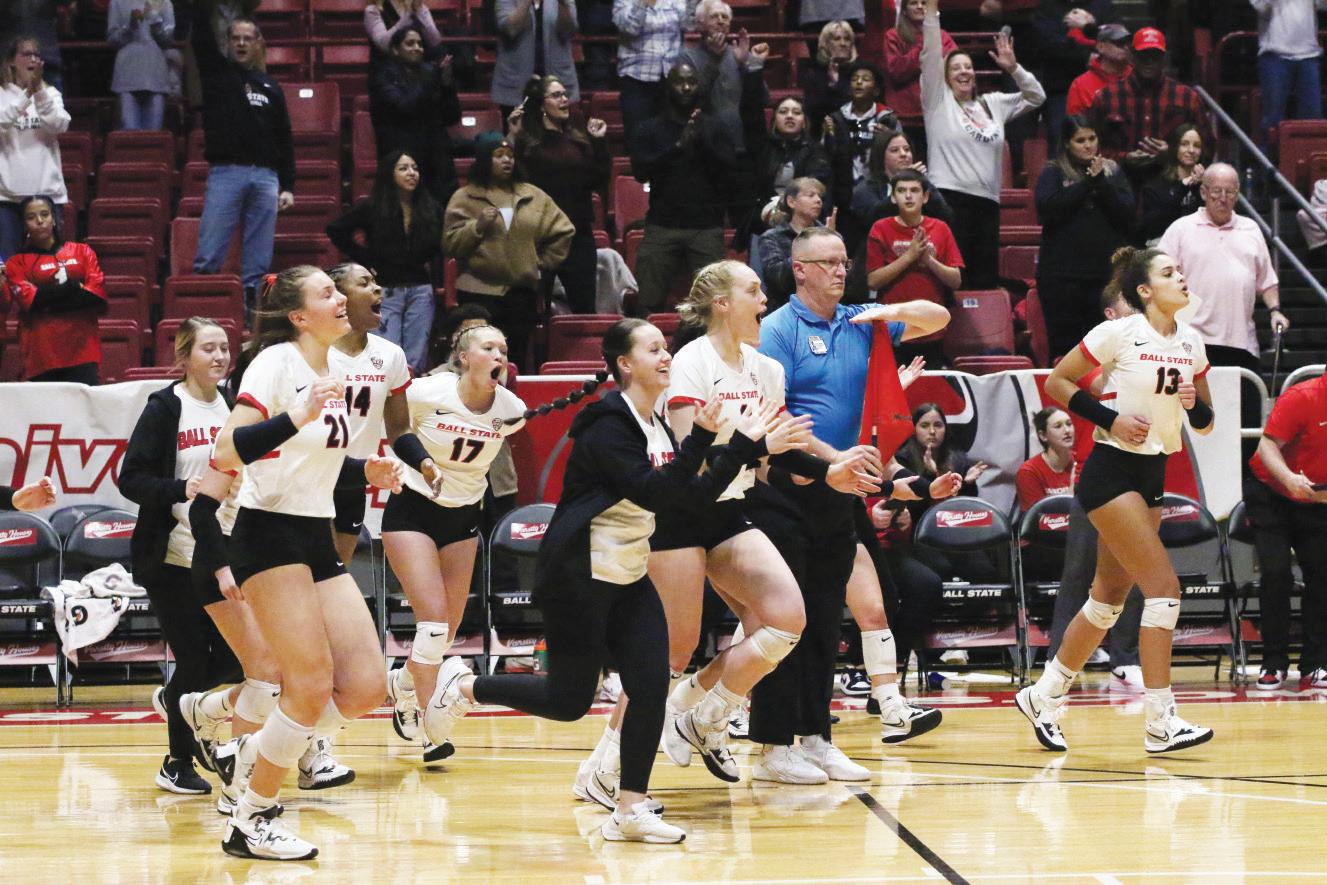
DNSports 11.17.22 15
Second-year setter Megan Wielonski sets the ball in a game against Toledo Nov. 16 at Worthen Arena. Wielonski had nine digs in the game. MYA CATALINE, DN
Fourth-year opposite hitter Natalie Mitchem spikes the ball in a game against Toledo Nov. 16 at Worthen Arena. Mitchem scored nine points in the game. MYA CATALINE, DN
Ball State celebrates the 3-1 win over Toledo Nov. 16 at Worthen Arena. The Cardinals won the MidAmerican Conference for the second year in a row. MYA CATALINE, DN
Third-year middle blocker Lauren Gilliland (left) and fourth-year opposite hitter Natalie Mitchem (right) block the ball in a game against Toledo Nov. 16 at Worthen Arena. MYA CATALINE, DN
Love languages could change the romantic lives of college students




ON BALLSTATEDAILYNEWS.COM: WHERE THE RAINBOW DOESN’T REACH DNOpinion 11.17.22 16
MEGHAN HOLT, DN ILLUSTRATION
Elaine Ulsh Columnist
Elaine Ulsh is a first-year computer science and physics major and writes “The Occasional Observer” for the Daily News. Her views do not necessarily reflect those of the newspaper.
Love is important to most people; I know it is to me.
As someone who began dating at the young age of 13, I know how difficult it can be. That is the reason I found myself slowly drawn to the why’s and how’s of love. Not necessarily why people love, but rather why love can be so difficult as a young adult, as well as how it could be easier.
Celebrating its 30th anniversary, Gary Chapman’s book “The 5 Love Languages” suggests that there are five love languages: acts of service, gifts, physical touch, quality time and words of affirmation. Chapman emphasizes how people have different personalities and experience love in different ways. Furthermore, he discusses the benefits of acknowledging such, one of which being enhanced communication in relationships.
These benefits have since been proved by a 2000 study which indicated that Chapman’s love languages are a more effective way to get couples to communicate compared to other methods. This includes even the widely accepted categories of relational maintenance.
While Chapman has helped millions of couples strengthen their relationships, his book is geared toward what makes a marriage last, not a young relationship. He also has a book on love languages geared toward teenagers. However, this book’s audience is geared toward parents of teenagers, not the teenagers themselves.
There is not much about how these love languages affect those new to adulthood. I find this incomplete as teenage relationships can be equally, if not more, complex than many adult relationships due to inexperience with love.
I first came in contact with the love languages due to my therapist. I had heard of them beforehand but never knew what they were all about or how the concept worked. She suggested figuring out mine, so I could understand how I express love. After all, you cannot expect someone else to understand your love language before you do.
Specifically, my main love languages are words of affirmation and quality time. For me, words of affirmation means that I want to know my partner notices me. I think this stemmed in me due to my love of books. I got to read the inner thoughts of thousands of different characters, so it was a challenge when my partner did not automatically see what made me tick inside.
However, with quality time, what I crave is undivided attention. Watching television with my partner can be boring sometimes due to it feeling like a waste of our time together. In fact, one of the things Chapman mentions in his section on quality time is that it does not include television.
For my partner, his main love languages are acts of service and physical touch. When we first began dating, I did not understand why he always wanted to touch me, usually just wanting to hold hands or put an arm around my waist.
It made me uncomfortable as I thought it was an implication of possessiveness. I know now it was just him expressing his love towards me.
With acts of service, he wanted to be shown love through me doing things for him, even unconsciously. It was more about being thought about than being pampered. I love to cook, so it was not that difficult to show love to him that way.
I noticed a significant improvement in my relationship once we started paying attention to the ways we were expressing our love for one another. It helped us. It led me to wanting to know how it could help other people too, especially college students.
As a teenager who fell in love, I believe love can be addictive. During the first couple of years of my relationship, I pushed my parents’ boundaries in order to maintain that love. I could not understand why they were so upset about how I was not spending as much time with them. I had spent my whole life with them.
Now, I realize what was really happening: I was addicted to spending time with my partner. He invaded all my thoughts. I was constantly thinking about him or texting him. In fact, I was counting down the seconds until each time I would get to see him.
Through the years, I slowly grew out of that. I believe this was due to the further development of my brain, allowing me to become more responsible. After all, I was only 13 when I fell in love.
An article by Susan Moore titled “Teenagers in Love” mainly focuses on how parents can support their teenagers as they discover what love is and the effect of love on teenagers.
Moore describes the teenage brain as a “work in progress.”
A University of Miami academic article addresses this by saying until the age of 25, most people’s brains are not fully developed; specifically, the part of the brain that allows someone to be responsible is not finished forming. The article explains the way in which the young brain is basically in a constant tug-of-war.
As someone who loved a little early, I can conclude, it was undoubtedly a part of my selfdiscovery. At 13, I had no idea who I was or what I wanted out of life. Now getting ready to turn 19, I have a much better understanding of what it means to be a more accepting and loving person.
More than half of college students are in committed relationships or are “single and dating,” according to a survey done through Cornell University. Some of these college students may be beginning the dive into their love journey.
But with love being so new to them, how are they supposed to know how a relationship works? I feel the love languages have helped me look beyond my own interests and consider my significant other’s perspective a lot more.
Many couples all over the world have experienced the same relief, and I believe it could significantly improve many new relationships.
For many young adults, learning to love can be difficult due to both its newness and its complexity. A study by the University of Virginia observed how the quality of young relationships can cause long-term changes in mental health.
It was found that healthier, early relationships lead to stronger mental health in older adults, as well as vice versa; this means poor or toxic early relationships lead to poor mental health as an older adult.
Due to this, it is extremely important for college students who are just now exploring the wonders of love to fully understand how people express it. Having that healthier relationship would positively benefit both partners, leading to stronger mental health overall even if they were to break up.
I’m not saying love languages have to take over your whole life, but in my experience, having them in the back of your mind and putting in an effort makes things easier.
With how difficult young relationships can be, I believe taking the love languages into account could get rid of unnecessary turmoil caused by miscommunication.
For those jumping heart-first into a college relationship, acknowledging the love languages could make that relationship and even the rest of your lives significantly easier.
Contact Elaine Ulsh with comments at elaine.ulsh@bsu.edu.
Acts of Service:
Actions that go above and beyond help these people feel your love towards them.
Gifts:
These people feel love through tangible items that you give them. It helps them know that you were thinking about them.
Physical Touch:
Physical expressions of love ring louder to these people than any other expression of love.
Quality Time:
Undivided attention on them with no distractions helps these people feel your love for them.
Words of Affirmation:
These people feel loved when their partner says how they feel about them and compliments them. They want to know what is special about them.
DNOpinion 11.17.22 17
I feel the love languages have helped me look beyond my own interests and consider my significant other’s perspective a lot more.”
SOURCE:
Source: The 5 Love Languages.com
“The main thing is to not only make sure they have a meal for that week or for that day but also to have them congregate and talk amongst each other and have that socialization with everybody [and] know that they have a place where they can talk to each other [and] come to us about help any way we can,” Castillo said.
Wilson pays special attention to the amount of children that attend the weekly event, as she has children of her own.

“[Youth] can reach out for help, and we kind of see what the kids are going through,” Wilson said. “I think the kids kind of get forgotten about because a lot of adults are out here, we’re struggling, and so, sometimes we’re [so] worried that all we see is our next meal. I think that’s good that we’re all centered right down the street with the kids, it’s really like a community here.”
Jen Cleveland is a teacher for the Indiana Digital Learning School of Union School Corporation, so like Wilson, she too is involved with children in the community and has noticed the impact both the weekly meals and the church itself have had on the youth.



“We have kids that come to church on Sundays without their parents because they know the











the importance of people of all ages and walks of life attending the Thursday night meals and other events put on by Avondale.

“[For] a lot of people, this group of people is their family,” Cleveland said. “They go into hard times, one of us picks them up, one of us takes them to the hospital, one of us spots some cash when they need it. We’ve done all that for people, and they’ve done [it] for each other too, just from knowing and making connections here and then bringing those out into the community.”
With seasonal holidays fast approaching, the crowd is normally smaller on Thanksgiving or around Christmas. However, Carless said the people who need to be served the most are the ones who attend.



“Some people don’t have that family, someone to really sit with and have a meal [with] or be thankful for,” Castillo said. “... The holidays are something for everybody to enjoy, and we don’t want to exclude anybody, everybody’s welcome. We want to instill that in everybody to just know they can come back, they can come whenever, every week, even on holidays.”
Contact Kyle Smedley with comments via email at kyle.smedley@bsu.edu or on Twitter @smedley1932.
authentic
Mexican Cuisine
Only
fresh. flavorful.
visit us at 508 S Tillotson Ave or order online!
one mile from campus! a gathering place for friends
DNNews 11.17.22 18
People gather around the entrance of Avondale United Methodist Church in Muncie, Ind., for an event. Avondale hosts Thursday night meals weekly from 5-6 p.m. Brian Carless. BRIAN CARLESS, PHOTO PROVIDED
On the sidewalk near an entrance to Avondale United Methodist Church in Muncie, Ind., people line up for food and supplies.
attendance filled the corresponding sidewalk to West Tenth Street. BRIAN CARLESS, PHOTO PROVIDED













ACROSS 1 Young amiga 6 Austen heroine played by Anya Taylor-Joy 10 Turner in the Rock and Roll Hall of Fame 14 Spanish “That’s enough!” 15 Competed (for) 16 Willing to talk 17 Brolly carriers 18 “Done venting!” 20 *Rehearsed reply 22 “Mom” actor Corddry 23 Dim sum beverage 24 Sporty option 26 Debonair 30 Target of some mining 34 Omega, to an electrician 35 *Spoke indirectly 37 Unlikely esports champions 39 Lithium-__ battery 40 “The Jetsons” dog 41 *Knowledge based on empirical evidence 44 Good times 45 Two-time Wimbledon winner Murray 46 Soprano Fleming 47 Less than some 48 Island ring 50 “Believe” diva 52 Something to chew on, and a hint to the answers to the starred clues 59 “Go figure!” 60 Black-and-white dunkers 61 Black-and-white swimmer 62 “Veep” award 63 Cosmic comeuppance 64 Spa treatment 65 Sincere 66 Sneakier DOWN 1 “American Greed” channel 2 Wedding ring? 3 “Do not push me right now” 4 Revitalizing snooze 5 Interview talking point 6 “Best. Day. __!” 7 “Dibs!” 8 Rx orders 9 Enlarged one’s family, in a way 10 Storms that may be chased 11 Some “hazy” brews, for short 12 State bird that sometimes nests on lava fields 13 Tiny toiler 19 Adversary 21 “The Daily Show” correspondent
24
25 Side
27 Come together 28 Oak
29 Locale 31 Museum
32
33 Together 35 Bing
36
sleeping
38 Patronize
42 Vagabond 43 Georgia __ 47 Like
networks 49
51
52 Uber
53
54
55
56
57
58
59
Find the missing piece of your day Visit the Ball State Daily website to access crosswords, jumbles and more! BallStateDaily.com/page/Puzzles Crossword & Sudoku CROSSWORD EDITED BY KURT
SOLUTIONS FOR NOVEMBER 10 DNPuzzles 19 11.17.22 Check out our Puzzles & Games page online: BallStateDaily.com/pages/Puzzles
Lydic
Fiji neighbor
issue?
of the future
curator’s concern
Successful sprint to the end zone, briefly
company
Sound that may wake
parents
neighborhood shops, say
some biological
Dreyer’s partner in ice cream
Catchy parts of pop songs
charge
“Fool me __ ... “
Woeful cry
Hindu epic hero
Short “Chat again soon”
Second novel in Marilynne Robinson’s “Gilead” series
Winter Palace monarch
Snappy dresser
KRAUSS; SUDOKU BY MICHAEL MEPHAM








WE WISH YOU THE BEST! Deadline to Buy: 11.28
Buy a Grad Wish to congratulate a Fall 2022 graduate! Scan the QR code to purchase.
Sponsored By: Presented By:












































































































































































































































































































































































































